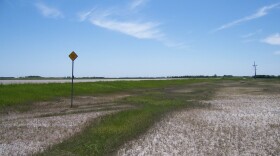If the morel mushrooms are not popping up in your area, they should be soon. As many of you know, morel mushrooms are eminently edible and the mushroom of choice for mushroom hunters.
Morel mushrooms resemble a sponge on a stem. But more about that later. They are mushrooms of spring. Many morel enthusiasts will search diligently for them when the lilacs are in bloom or when oak leaves are the size of mouse ears.
The first rule of eating wild mushrooms is “Don’t eat any mushroom you can’t positively identify.” Okay, so there is the disclaimer. And please be aware of a group of morel look-alikes called false morels. Their edibility is often listed as “edibility unknown” and although they are actually quite easy to differentiate from true morels they are occasionally misidentified.
The morels I have seen in the state are generally between 3-5 inches tall with a tan or dark brown cap. A key characteristic of morels is that the cap has distinctive ridges and pits. As such they are often described as a sponge on a stick. Another important characteristic is that the cap is attached to the stalk at the base of the cap. False morels, on the other hand have a cap with folds and convolutions (more like a brain or walnut), and the cap is draped over the stalk which extends up into the cap where it is attached at the very top. The cap of a false morel is often described as resembling a skirt with many folds that hangs over the stalk.
So where should one look for morels? That is not easily answered, in part because the ecology of morels is not well understood. Plus, if you ask a morel hunter where to find a patch of morels, take the answer with a large grain of salt. Like a favored fishing hole, morel patches are heavily guarded secrets. However, morels have been associated with oak, elm, ash, willow, aspen, and cottonwood trees, as well as old apple orchards. The only factors that I have found to give a high probability of finding morels are to spend less time walking a more time looking, places where I have previously found them, and areas that have been recently burned or disturbed in other ways.
If you are fortunate to find a mother lode of morels, have at it. Collecting mushrooms doesn’t harm the mushroom population. The vegetative mycelium is in the soil. Picking a flower isn’t going to kill a plant, and collecting mushrooms is not going to kill the fungus. You may even be helping the morel population by inadvertently spreading the spores.
—
Further reading:





